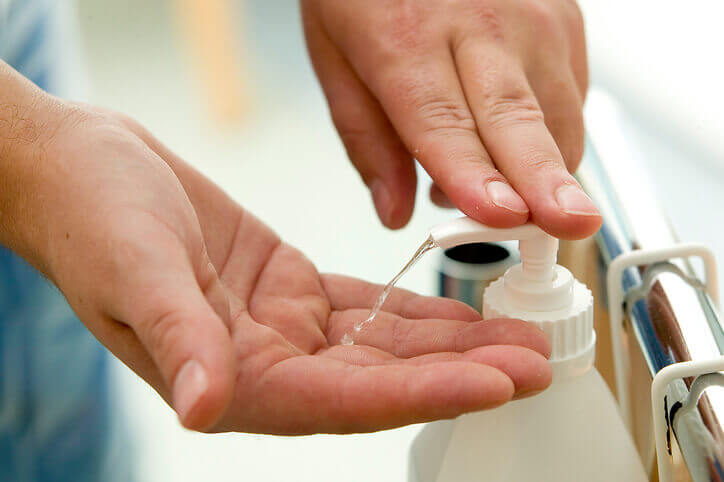Self-cleaning materials
Self-cleaning materials and surfaces are components that have an inherent ability to remove any bacteria or debris from their surfaces in different ways. The functions of self-cleaning materials and surfaces are inspired by a phenomenon observed in water striders, gecko feet, and lotus leaves. The self-cleaning material has been developed from the nanotechnology, an innovation that is based on the engineering of nanoparticles. These particles are coated onto surfaces which will then produce electrons when exposed to heat or light. It will then lead to a chemical reaction that breaks dirt particles or rejects them from the surface.
In self-cleaning, nanotechnology is used to create materials or clothing, that reduce air pollution. The underlying inspiration behind the technology comes from observing nature and animals. The initial developers of this technology looked at the properties around lotus leaf that always seems clean no matter the surrounding. The leaf is made of a hydrophobic surface that repels water into droplets which run down the leaf removing particles.
The same character is exhibited in butterflies, wall geckos, and dragonflies which enabled them to stay safe around water and spider webs. In this way, the technology is depending on the nano-particles when it comes to the cleaning solution. The particles help in breaking down the dirt more easily.
Self-cleaning with nano-emulsion is all about targeting the dirt more easily.
These emulsions mix with detergents attract the dirt for a more effective process. This all depends on the nano surface area per unit volume as well as their transparency, stability, and strengths.
Self-cleaning materials are now applied in different areas like cosmetic items, medical items, and cleaners. They are also used in manufacturing car windscreens and designing self-cleaning swimming pools. Self-cleaning in hospitals is done through nano-septic self-cleaning surfaces. This will allow healthcare structures to achieve and maintain high cleanliness levels. To do this, hospitals will have to put no septic skins and mats in dirt prone walls and surfaces like door handles, reception counters and over the bed tray tables. Apart from containing cleaning properties, the surface is free from chemicals and other diluted poisons. They will also be able to work 24/7.
Doctors will also find self-cleaning surfaces relevant as it will prevent them from contacting dirty areas while attending to a patient. The Nanoseptic surfaces can even put in surgical areas to prevent foreign bodies from interfering with the operations. Doctors can also use the Nano septic surfaces in examination rooms or even to gadgets, like thermometers, and stethoscopes which come in contact with different patients. This will prevent patients carrying infection from one person to the next.
| Recommended for you | |
| Nanobots delivering drugs to cancerous tissues | |
| Top 5 solutions for better patient experience in hospitals | |
| Digital hygiene solutions for hospitals |
Top Players developing self-cleaning materials
Pureti manufactures self-cleaning surfaces which can be applied in hospitals. The company’s technology is based on coating surfaces with titanium dioxide in liquid form. The self-cleaning surface can break down dirt, when it is exposed to and mixed with titanium dioxide found in the self-cleaning material. In this way, the surface remains clean. Their self-cleaning surfaces have been used in Spain surgical centers oxidizing airborne particles thus reducing the risk of infection.
NanoLabs Corp the company developed a self-cleaning paint which uses nanoparticle compound to reduce pollutants through natural light. It can also be used in hospital bathrooms surfaces, doctors boots, surgical gloves, and walking aids. When the self-cleaning paint is applied on the surface, the coating protects the surface from wearing out thus reducing the cost of maintenance.
Nantes, on the other hand, is in the business of developing self-cleaning textiles, used in manufacturing car covers, sofa seat cover among other forms.
Alcoa company came up with a self-cleaning technology which clears smog from window panels. This happens when titanium dioxide (TiO2) particles are exposed to sunlight, acting as photo catalysts. The sunlight enables the TiO2 electrons to supercharge thus interacting with water molecules. This will then release radicals that break the organic material on the panel leaving it clean.
Exploit technologies has also come up with a coating technology, that reduces the frequency of washing windows and other hospital surfaces. When this is done, the cost of construction and maintenance will drastically reduce, especially in big hospitals that require much personnel. Since water is also conserved in the process, the self-cleaning technology will have a more environmentally friendly way of keeping buildings clean, especially in areas that are filled with skyscrapers.
The coating technology also reduces material wastage during physical cleaning. This is because strong detergents and high-pressure water jets can damage a building. The company has already begun mass production of the self-cleaning, coating, with a lot of market success, especially on commercial buildings.
A renowned researcher working in the areas of self-cleaning innovations is Anish Tuteja, who is a materials researcher at the University of Michigan. As a researcher, Anish’s innovation presented a self-cleaning technology which produces a smooth coating that repels all liquids. Also, Dr. Catarina Esteves, an assistant professor of chemical engineering and chemistry and other colleagues from TU/e , discovered a way of ensuring nano-capsules in self-healing coatings, are active and in motion for a long time. Thus keeping the surface cleaner to boo. The coating can be applied to any surface.
Researchers from Ian Potter Nano Biotechnology research lab and Nano Bio-sensing facility at RMIT university worked with silver and copper in regard to nanostructures known for their absorption of light. It was found that when nanostructures are exposed to light they will receive energy, creating hot electrons. Nano-material researcher Walid Daoud with his team from Monash University, Victoria, Australia, discovered a way to coat fibers with dioxide Nanocrystals, titanium that breakdown dirt In sunlight.
Conclusion
The development of self-cleaning materials has resulted in positive changes in the management of hospital infrastructure. Self-cleaning materials reduce the risk of infections caused by dirt and human contact with surfaces. Also, the technology has contributed to cost-cutting in maintenance, cleaning, and renovation of hospitals.
Doctors can use this technology during physical examinations, while intensive care units with these surface can reduce foreign bodies from affecting the healing process of patients. Since hospital are meant to be hygienic and free from infections, self-cleaning surfaces are the future for construction of hospital infrastructure.
This should be extended to other gadgets used by both patients and doctors. For example, hospital beds, bedside console, walking aids, telephones and other electronics used. This technology should be extended in bathrooms and dinners as they are places prone to dirt and infections. It is also vital that more research is done towards developing a new use for self-cleaning surfaces, like developing bed sheets and patient clothes with self-cleaning ability.
Image credit: www.istockphoto.com

















